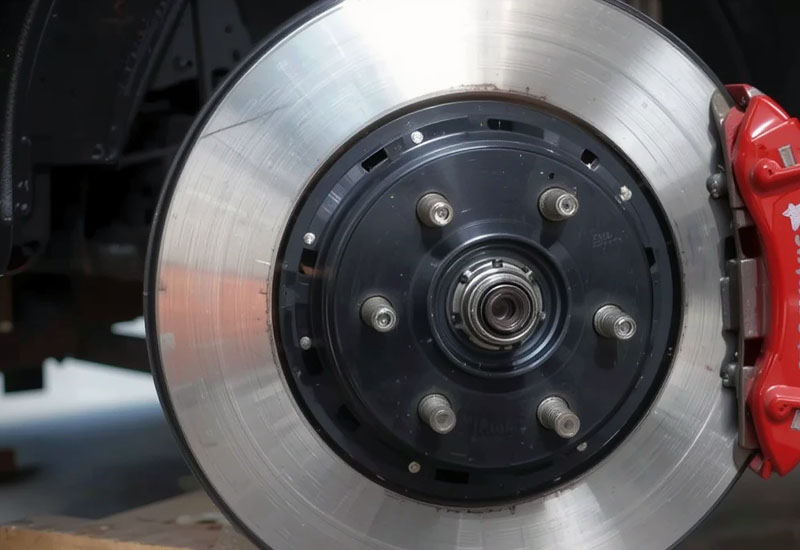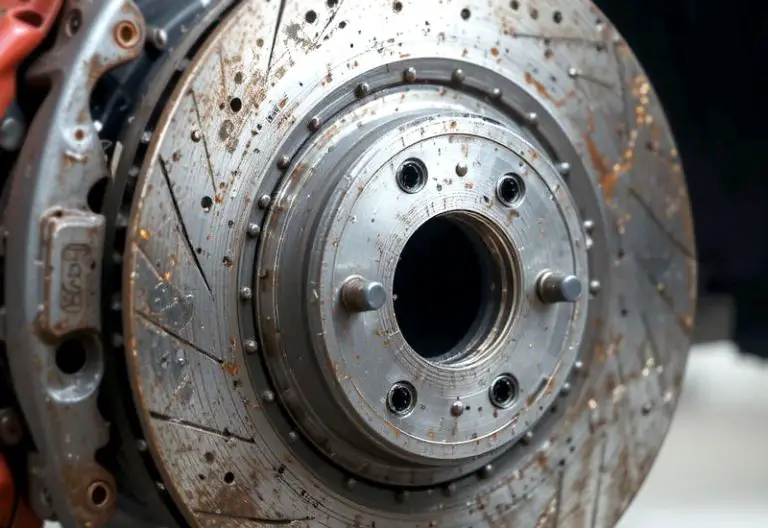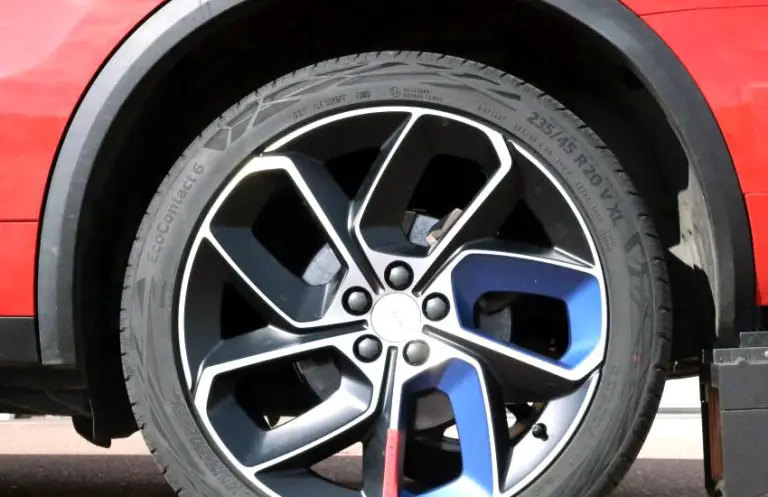When your car’s braking system starts acting up, the last thing you probably want to do is dive deep into car repairs, right? But what if I told you that there’s a way to save some serious cash and keep your car running smoothly by relining your brake drums instead of buying brand new ones? Sounds pretty good, huh? Well, let’s take a deep dive into whether relining your brake drums is really the best option for you. In this post, we’ll cover everything you need to know about brake drums, the relining process, and when it’s best to consider replacing them.

Understanding Brake Drums and Their Function
If you’ve ever wondered what in the world a brake drum even is, you’re not alone. Many people don’t realize how important these components are to the smooth running of your car until something goes wrong. Let’s break it down in simple terms.
A brake drum is a part of your car’s braking system. It’s a large, round piece of metal that fits over the wheel hub, and it plays a crucial role in stopping your vehicle. When you step on the brake pedal, the brake shoes press against the inside of the drum, creating friction that slows down the wheels. This friction is what brings your car to a stop.
Now, while brake drums do a great job of doing what they’re supposed to do, they do wear out over time. The constant heat, pressure, and friction can cause the surface of the drum to become grooved, cracked, or damaged. When this happens, it’s important to either replace or reline the brake drum, depending on the level of wear and tear.
Understanding the function of brake drums is essential because it helps us know when something’s gone wrong and how to fix it. While the braking system as a whole might be complex, the brake drum is a pretty simple component in terms of its function.
Why Brake Drums Wear Out
Just like any other part of your car, brake drums wear out over time. The more you use your car, the more pressure is put on the braking system, and this results in the wear and tear of the brake drums. Here are a few reasons why brake drums can wear out:
- Excessive heat: Braking generates a lot of heat. Over time, this heat can cause the brake drum to warp or crack.
- Friction: The constant friction between the brake shoes and the drum can wear down the surface, creating grooves or unevenness.
- Moisture: Exposure to moisture, like rain or snow, can cause the metal to rust, making it less effective.
If you’re hearing strange noises or feeling vibrations when you brake, your brake drums might be the culprit. But don’t worry, fixing them is totally possible.
What Does Reline Brake Drums Mean?
So, we know what brake drums are and why they wear out. But what does it mean to “reline” them? In simple terms, relining brake drums means adding a new layer of friction material to the brake shoes. This is a way to restore the braking system to its original performance without replacing the entire drum.
When the brake shoes inside the drum become worn down, they can’t create enough friction to stop your vehicle effectively. By relining the brake shoes, you give them new life, which can extend the overall lifespan of the brake drum and save you money in the long run.
But here’s the thing—relining brake drums isn’t always possible. If the drum itself is too damaged or worn out, then relining the shoes won’t help much. In that case, you’ll need to replace the brake drum entirely.
How Reline Brake Drums Works
The relining process involves removing the old, worn-out friction material from the brake shoes and replacing it with fresh, new material. This is typically done by a professional who specializes in brake systems. The new lining helps restore the effectiveness of the brakes, making them as good as new.
The benefit of relining brake drums is that it’s often cheaper than buying a new set of drums. However, this doesn’t mean it’s always the right choice. If the brake drums themselves are severely damaged or warped, then it may be more cost-effective to replace them entirely.
Signs That Your Brake Drums May Need Relining
Now that we understand what brake drums and relining are, it’s time to talk about how to tell if your brake drums need relining. There are a few clear signs you can look out for that will let you know it’s time to address the issue.
1. Unusual Noises While Braking
One of the most obvious signs that your brake drums need attention is strange noises when you apply the brakes. If you hear squealing, grinding, or a high-pitched screeching sound, it could be a sign that the brake shoes are worn down, and the drum needs to be relined.
2. Reduced Braking Performance
If you notice that it takes longer for your car to come to a complete stop or the brakes feel less responsive than usual, the brake drums may be in need of relining. This is a safety concern, so it’s best to get it checked out as soon as possible.
3. Vibration or Pulsation
Another telltale sign is a vibration or pulsation when you press the brake pedal. This usually means that the brake drums are unevenly worn, and the shoes can’t make proper contact with the surface. This could be a sign that the brake drums need to be relined.
4. Visible Wear on the Brake Shoes
If you can see that the brake shoes inside the drum are visibly worn down or cracked, it’s a clear indicator that relining is needed. The friction material on the shoes may be thin or gone completely, reducing the overall effectiveness of your brakes.
5. Brake Drums Appear Cracked or Warped
If you notice visible cracks or warping on the surface of the brake drum, it’s usually time for a replacement, not a reline. Damaged drums can’t be relined safely, so it’s essential to get them replaced before they cause further damage to your braking system.
The Process of Relining Brake Drums
Okay, now we know why brake drums wear out and how to spot the signs. But how exactly does the process of relining brake drums work? Let’s break it down.
Step 1: Inspection
Before any work is done, the first step is an inspection. A qualified mechanic will inspect the condition of the brake drums to determine if relining is even possible. If the drum is severely cracked or warped, it might need to be replaced entirely.
Step 2: Removal of the Brake Shoes
Once the brake drum is deemed suitable for relining, the next step is to remove the old brake shoes. These shoes are typically held in place by a series of clips and springs. After the shoes are removed, the old friction material is stripped away.
Step 3: Preparing the Brake Shoes
With the old material removed, the brake shoes are cleaned and prepared for the new lining. Sometimes, the shoes are machined to ensure that they have a smooth surface for the new material to adhere to. This step ensures that the new lining will provide maximum friction and performance.
Step 4: Applying the New Lining
The next step is to apply the new friction material to the brake shoes. This material is usually made from a combination of rubber, metal, and other materials designed to provide excellent stopping power. Once the material is in place, it’s carefully shaped and bonded to the shoes.
Step 5: Reassembly and Testing
After the new lining is applied, the brake shoes are reassembled, and the brake drum is put back in place. The entire braking system is tested to ensure that the relined shoes are functioning correctly. If everything checks out, the job is done!
Advantages of Relining Brake Drums Over Replacing Them
If you’ve been told your brake drums need to be replaced, you might be wondering: is it worth it to reline them instead? Well, let’s take a look at some of the benefits of relining brake drums.
1. Cost-Effective
One of the biggest advantages of relining your brake drums is that it’s typically much cheaper than replacing the entire drum. Brake drums can be expensive, especially if you have a high-end car, so relining can save you a significant amount of money.
2. Environmentally Friendly
By relining your brake drums, you’re also helping the environment. Instead of throwing away perfectly good brake drums, you’re extending their life and reducing waste. This is a great way to contribute to a more sustainable future.
3. Restores Performance
Relining the brake shoes restores the braking power to like-new levels. You’ll get better braking performance, and your car will stop faster and more effectively. This can be especially helpful if your brake drums have become worn down over time.
4. Faster Process
Relining brake drums is often a quicker process than replacing them entirely. Since you’re only replacing the brake shoe linings, there’s less labor involved. This can be a huge time-saver if you need your car back on the road quickly.
Potential Risks and Drawbacks of Relining Brake Drums
While relining brake drums has its advantages, it’s not always the right choice for every situation. Let’s take a look at some of the potential risks and drawbacks.
1. Limited Lifespan
Relining your brake drums may extend their life for a while, but it won’t make them last forever. If the drum itself is severely damaged, relining won’t do much to help. Eventually, you’ll need to replace the drums anyway.
2. Not Always Effective for Severe Damage
If your brake drums are cracked, warped, or heavily damaged, relining the shoes won’t be effective. In these cases, replacing the drums is the better option. Trying to reline badly damaged drums could lead to poor braking performance or even further damage.
3. Requires Professional Expertise
Relining brake drums isn’t something most car owners can do themselves. It requires special tools and expertise to get the job done right. So, you’ll need to rely on a professional, which adds to the overall cost.
When Should You Consider Replacing Brake Drums Instead of Relining Them?
There are some situations where it’s best to simply replace the brake drums instead of attempting to reline them. Here are a few things to consider:
- Severe damage: If the brake drum is cracked, warped, or excessively worn, relining the shoes won’t fix the problem. In these cases, replacing the entire drum is necessary.
- Cost considerations: Sometimes, replacing the drum may not be that much more expensive than relining the shoes. If the difference in price is small, you might as well replace the whole thing.
- Long-term reliability: If you plan on keeping your car for many more years, replacing the brake drums may be the better option for long-term reliability. Relining may only be a temporary fix.
Cost Considerations: Reline vs. Replace Brake Drums
So, how much does it cost to reline brake drums versus replacing them? The answer depends on a few factors, including your car’s make and model, the condition of the brake drums, and where you go for the service.
Reline Costs
On average, relining brake shoes can cost between $100 and $200, depending on the labor and parts required. This price is much cheaper than replacing the entire brake drum, which can cost anywhere from $200 to $500 or more per wheel.
Replace Costs
Replacing the brake drum is a more expensive option. For most vehicles, you can expect to pay anywhere from $150 to $300 per drum. This can quickly add up if you need to replace all four drums.
If you’re on a budget, relining your brake drums is a cost-effective option. But if you want long-term performance and reliability, replacing the drums might be the better choice.
I hope this guide helped you understand everything you need to know about relining brake drums and whether it’s the right option for you. If you have any doubts or your brakes are acting up, it’s always a good idea to consult a professional to ensure your safety on the road!
Frequently Asked Questions
Is it safe to reline my brake drums at home?
It’s not recommended to attempt relining brake drums yourself unless you have professional experience and the right tools. It’s best to leave this job to a trained mechanic.
Can I drive with worn brake drums?
While you can drive with worn brake drums for a short time, it’s dangerous. Worn drums reduce braking effectiveness and can lead to accidents. It’s best to get them checked out as soon as possible.
Do I need to replace my brake drums if they’re slightly worn?
If the wear is minimal, relining the brake shoes might be enough to restore performance. However, if the drums are heavily worn, replacement might be necessary for safety reasons.
Is it possible to reline brake drums myself?
Relining brake drums requires special tools and expertise, so it’s not something most car owners can do on their own. It’s best left to professionals.
Can I reline brake drums with aftermarket materials?
Yes, aftermarket materials are available for relining brake drums, but it’s important to make sure they meet the manufacturer’s specifications for safety and performance.
Do I have to replace brake drums every time I replace the shoes?
No, you don’t always have to replace the brake drums every time you replace the shoes. If the drums are in good condition, they can be reused.
Is it better to replace brake drums or reline them?
It depends on the condition of your brake drums. If they are severely damaged, replacement is the better option. If they’re only slightly worn, relining might be a cost-effective solution.
Can I use a different type of friction material for my brake drum relining?
It’s important to use friction material that matches your car’s specifications. Using the wrong material can affect braking performance and safety. Always check with a professional.


